Arielle interview: “I want to educate people about where their guitars come from. There’s a level of disconnect that’s affecting the planet“
The Texan guitarist discusses her BMG signature model, Eric Johnson's tone tips and eco-conscious electric guitar builds
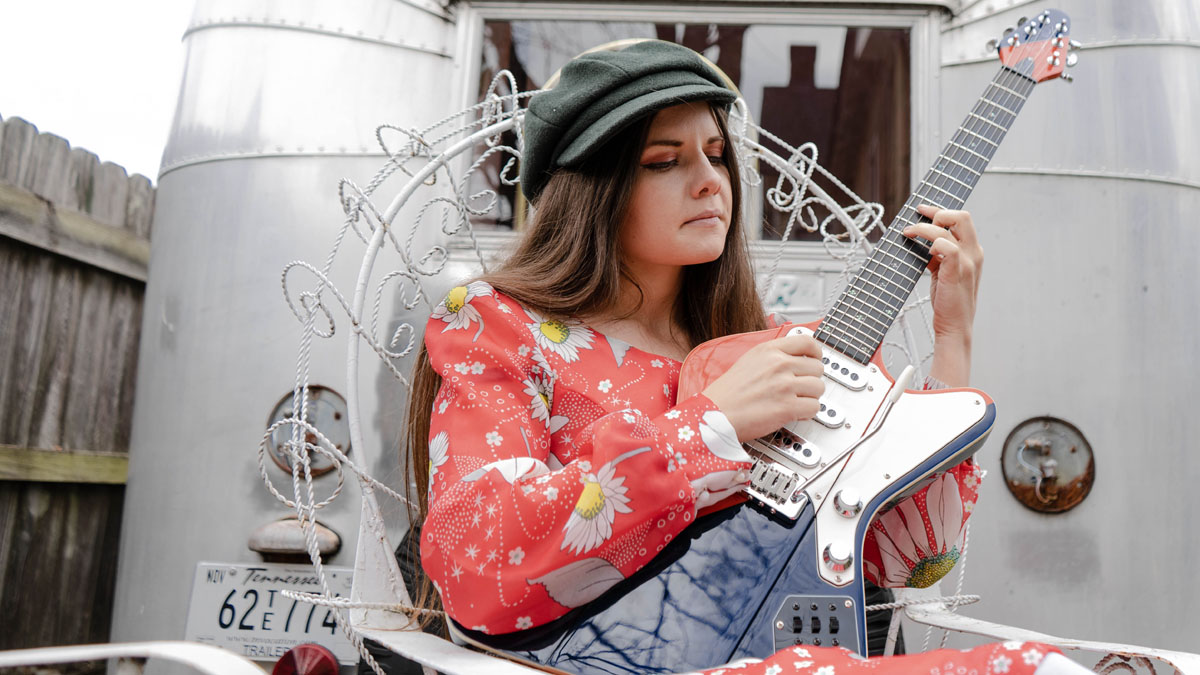
Up until this year, Brian May Guitars had only built models played by the Queen legend himself – both acoustics and electrics based on the famous Red Special he built with his father at the age of 16 back in 1963.
That all changes with the introduction of the Arielle signature which, strangely enough, is based on the Two-Tone guitar she too co-built as a 16 year-old.
The new models, described by May as “the Red Special in a parallel universe” feature the same retro looks as Arielle’s original, with a burnt orange and translucent blue finish, as well as the distinctive 3-a-side headstock, Tri-Sonic style single-coil pickups and phase switching system found on his own signature.
“Arielle’s playing reaches places I never knew existed… I believe this guitar will do the same,” stated the Queen axeman earlier this year.
I don’t think having my own signature model has properly sunk in yet! the fact that it’s gotten this far and I will eventually see other people playing it is really cool
For Austin-based singer-songwriter Arielle, it’s been quite the wild ride – from meeting May in 2007, which led to him inviting her to audition for long-running musical We Will Rock You, some long-distance jamming on Instagram and eventually making guitars together. The arrival of the new signature will coincide with the release her ninth studio album Analog Girl In A Digital World.
“I don’t think having my own signature model has properly sunk in yet!” she tells MusicRadar, talking to us via videoconference from her home studio. “It’s something we’ve been working on for about three years now. When I built the guitar originally, I never considered it to be anything but a guitar that would be cool to have. So the fact that it’s gotten this far and I will eventually see other people playing it is really cool…
“I’ve been coming back and forth from the UK to the US since 2008, when I got the We Will Rock You audition,” she explains. “I sorted a VISA and got on a plane, and also started studying at a music school in London, which is where I was based for a couple of years. A decade on, to have my own Brian May Guitars model still feels pretty crazy!”
Get the MusicRadar Newsletter
Want all the hottest music and gear news, reviews, deals, features and more, direct to your inbox? Sign up here.
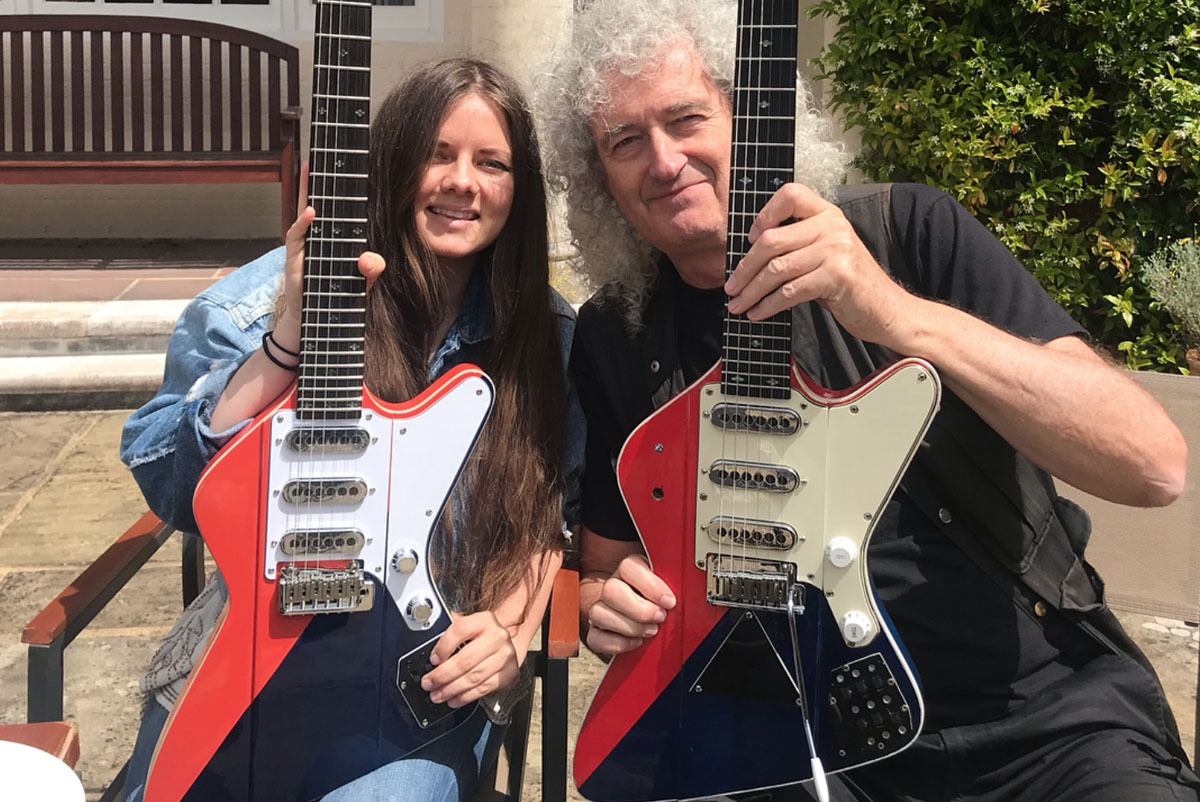
It’s interesting how you both designed your own guitars in your mid-teens…
“We didn’t quite finish mine when I was 16 but you’re definitely right – it’s hard to know where to go with building a guitar at that age. Thankfully I had a friend who knew more about making them than I did. It was completely from scratch and we made it a neck-through, so the neck and body are connected, which can make things even more complicated!
It’s not a direct replica of Two-Tone, which is why we called it the Arielle. It’s a combination of my guitar and Brian’s guitar, so it’s very special
“I wouldn’t say we did a completely professional job, when you pick up that guitar it has a vibe for sure, but if you were going to be judging it as a guitar, it would probably feel like an amateur instrument. Over the years I’ve tried to make it better and fill in the gaps I felt it had. I’ll never be able to replace but with Brian May guitars I can at least try to improve on it.
“This version will have elements that make it better and different. It’s not a direct replica of Two-Tone, which is why we called it the Arielle. It’s a combination of my guitar and Brian’s guitar, so it’s very special.”
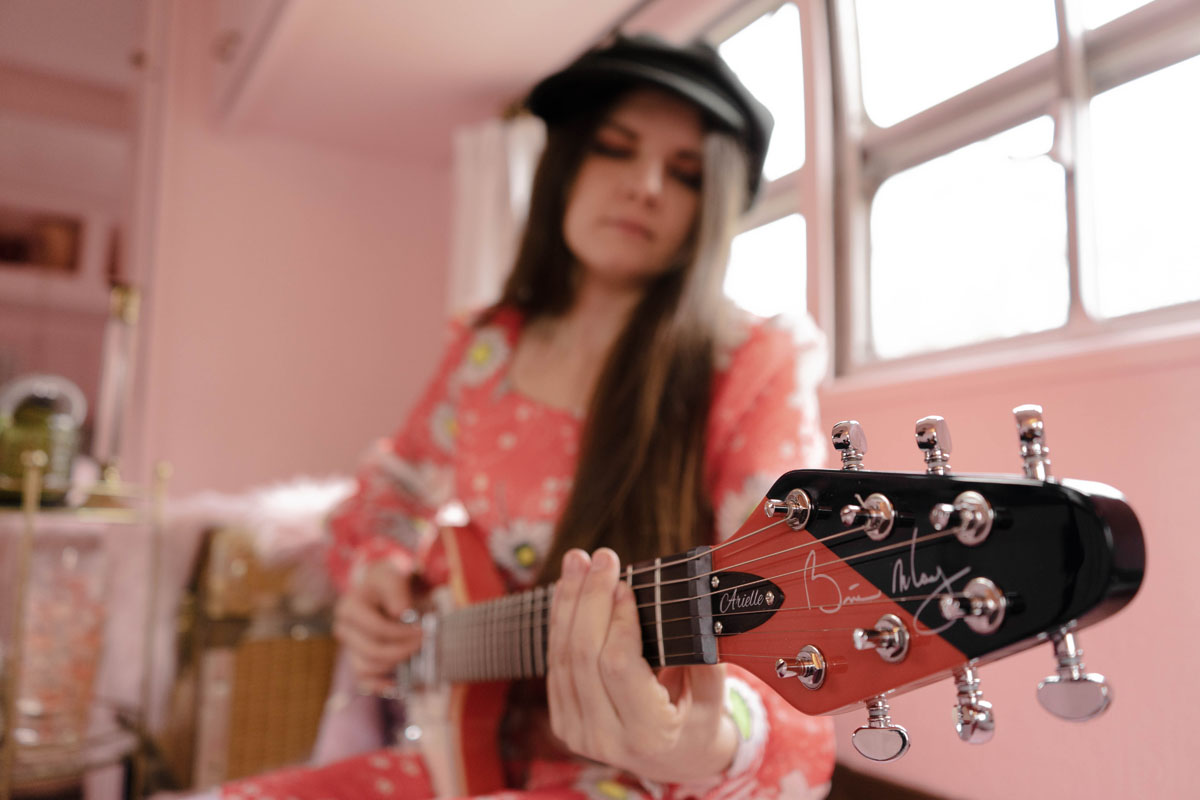
What kind of tonewoods did you end up deciding on?
“So for the woods, we kept the body material as Limba, the same as my original. I’m not sure why I originally picked that. I really didn’t know much about tone back then, so it was just a happy accident. The Brian May models will be made from a light Limba, or Korina as some people know it.
“The fingerboard will be Ebony, like Brian’s models and my Two-Tone. I’ve always liked the smoother sound of Ebony, but in the future – knowing more about the ebony tree – I might switch to something else. The neck itself is Mahogany, that’s just what the Brian May company does, and unlike my original it will have a set neck. So there are a few changes but for the most part, the new models will be pretty much the same.”
I think the guitar community, at least online, has grown to appreciate the more showy stuff… the more sexy stuff, in a way. I understand why it’s hard for guitarists to decide to do what’s right for the music rather than their social media channels and ego!
The first single from your new album, Peace Of Mind, has a really tasteful solo – more minimalist than some of your previous work but all choice notes…
“I’ve always tried to find a balance. It’s a conscious thing, but maybe I haven’t been the most tasteful guitar player until now! Every time I talk to a buddy of mine, Vince Gill, and ask how he’s doing, he says, ‘I’m doing okay… playing less notes!’ I think that’s the approach I’ve been going for.
“I think the guitar community, at least online, has grown to appreciate the more showy stuff… the more sexy stuff, in a way. I understand why it’s hard for guitarists to decide to do what’s right for the music rather than their social media channels and ego! We all have to make that decision.
“I’ve become a lot more true to my music in that sense. If people don’t realise what I’m capable of doing, it doesn’t matter. Playing the right notes is all I need.”
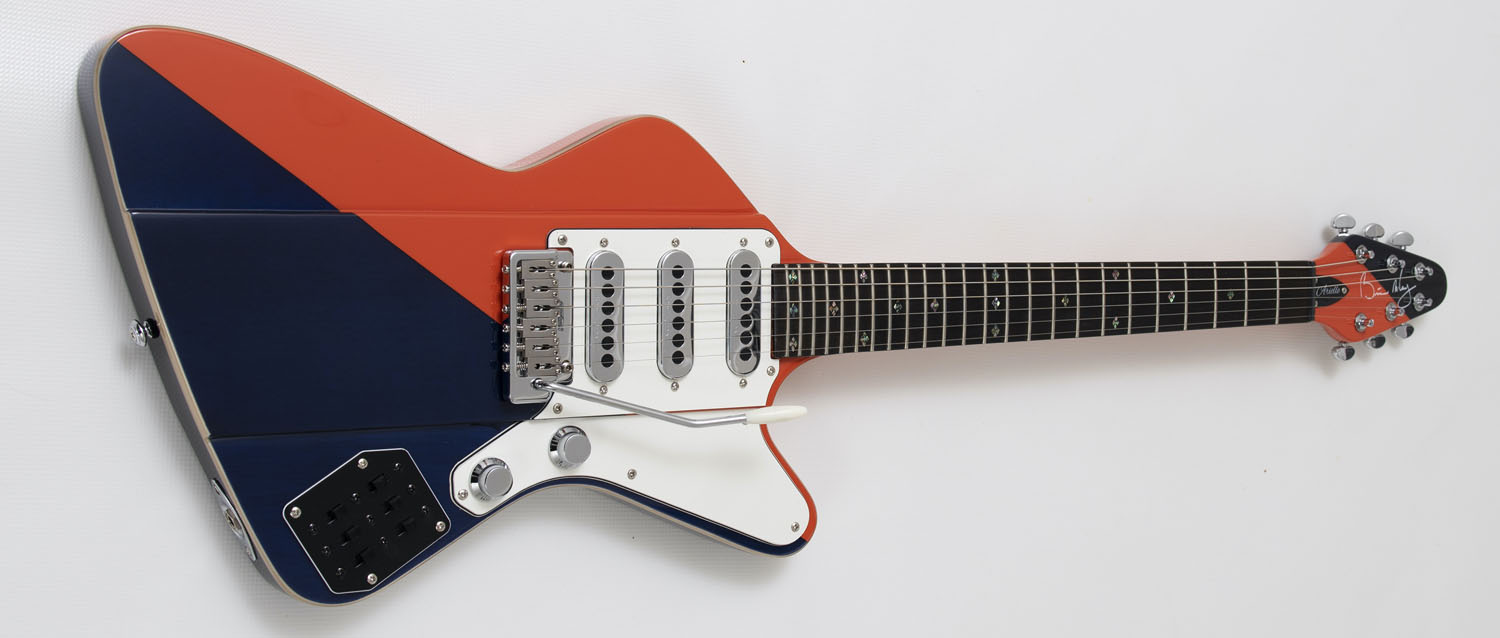
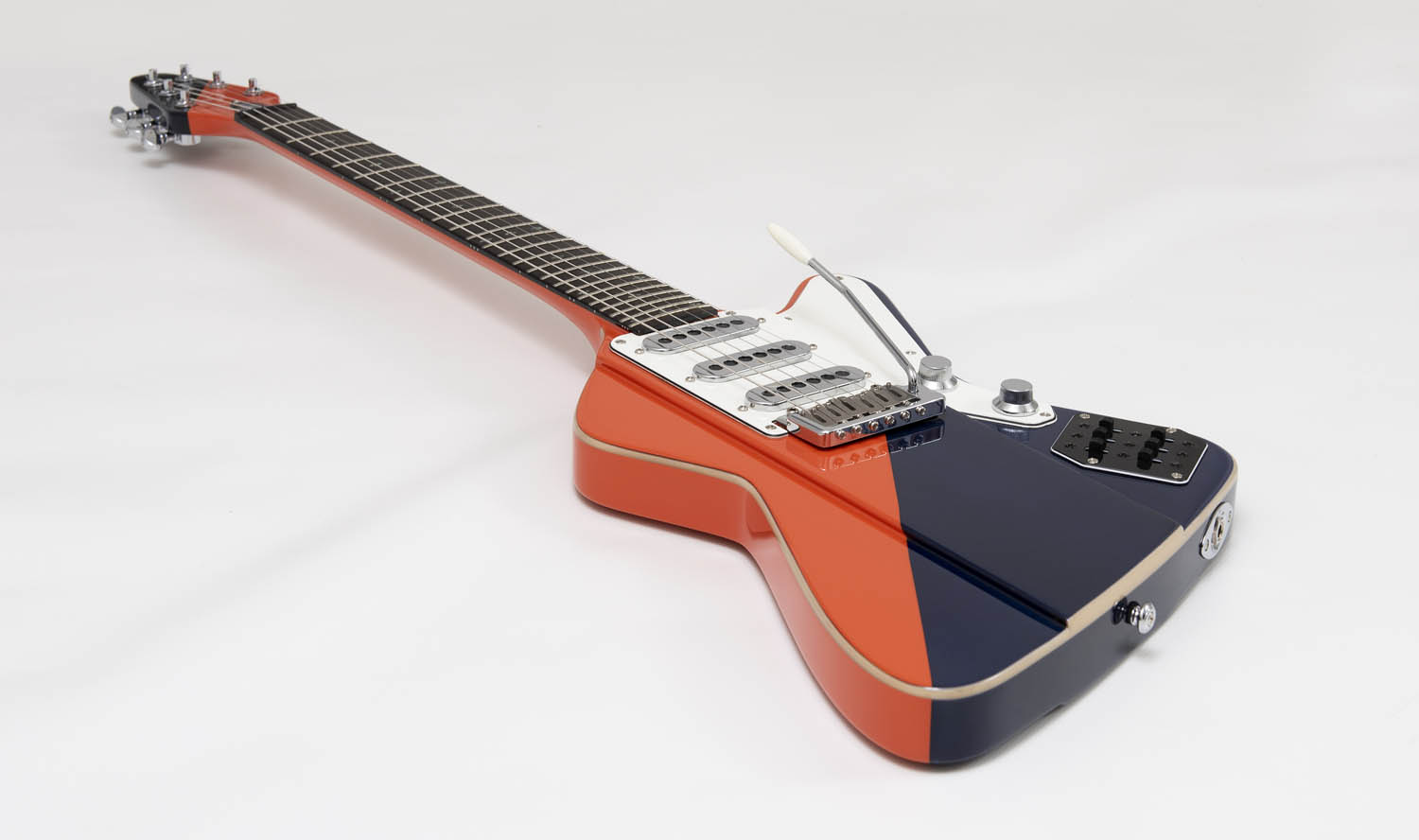
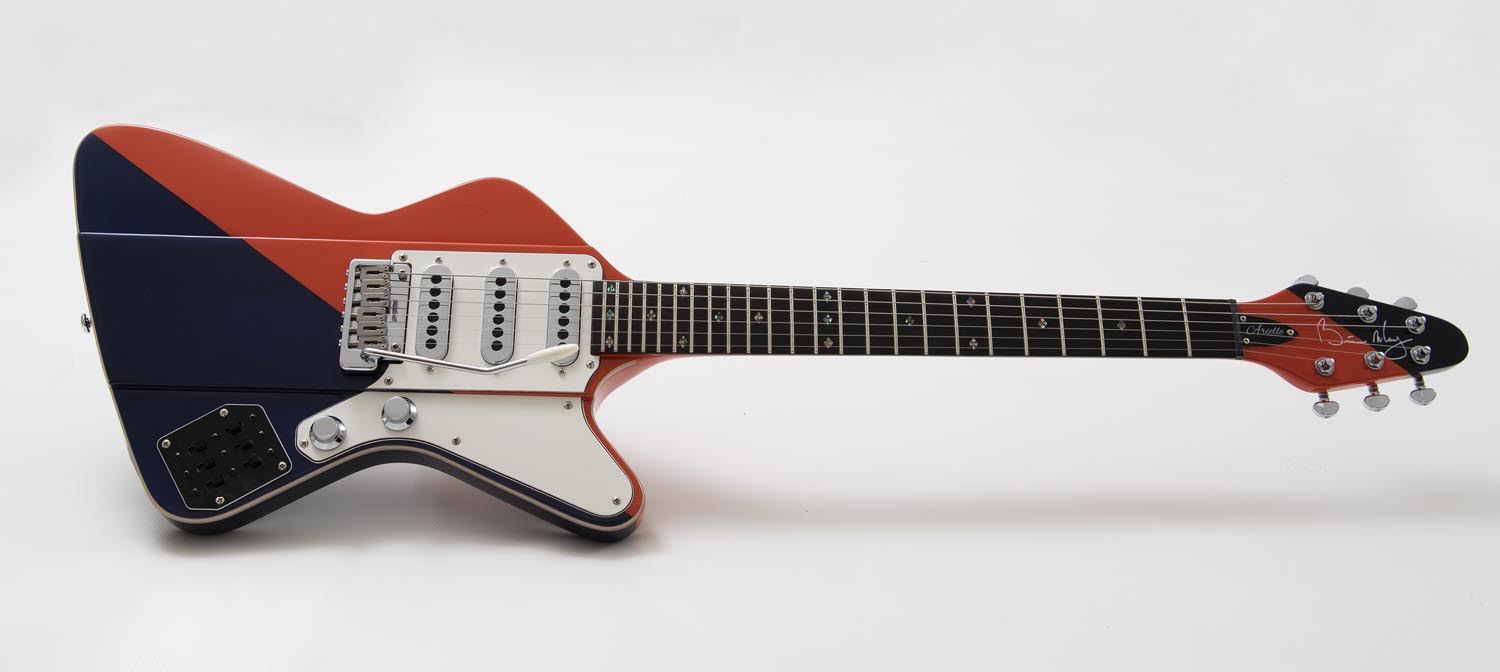
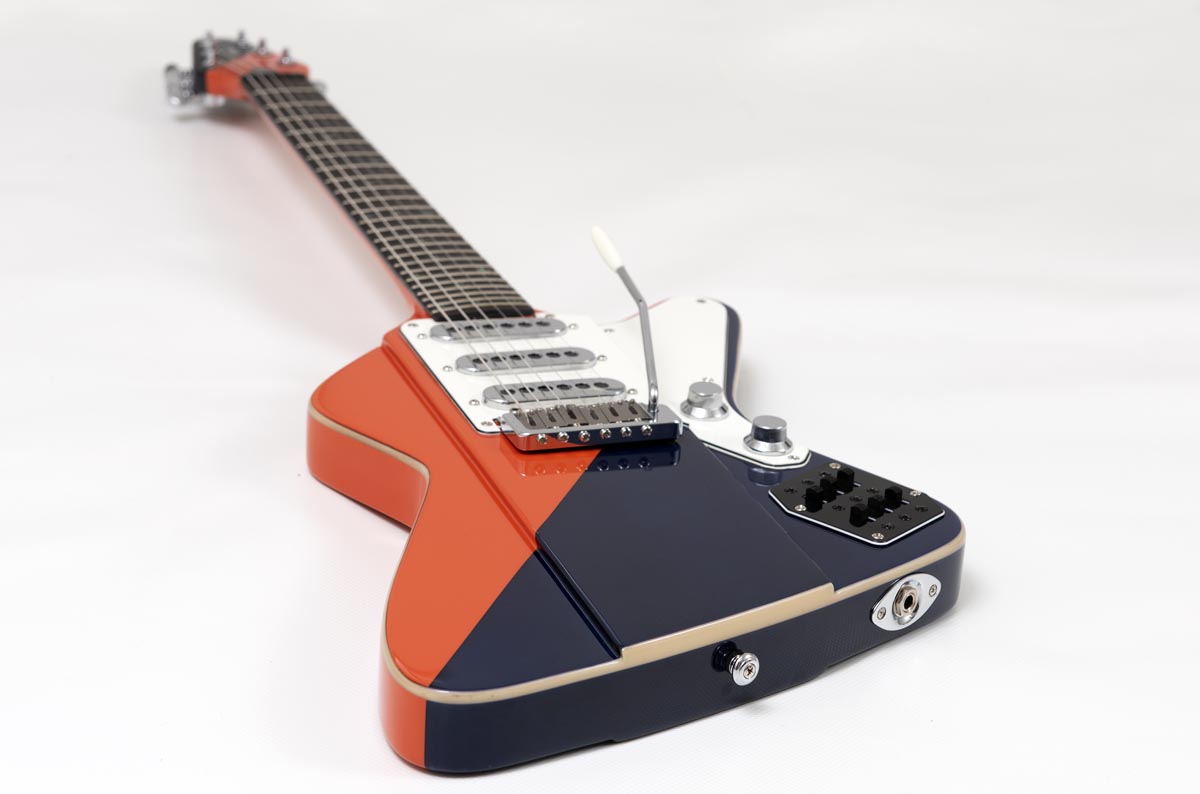
For example, Take II from 2018’s Mind Lion is quite shreddy and metallic in comparison…
“Yeah… that was a bit overboard. I’ve actually removed that song from my set. I always joke that I’m really old and can’t play anymore, but honestly that one has an energy I can’t quite get to grips with anymore. It’s very tiring [laughs]!
“I have different ways of expressing that kind of emotion. For example, This Is Our Intervention has a lot of that high energy without being edgy, going for a more 60s approach than 80 approach on my guitar.”
You’ve also stepped into more otherworldly, almost jazzy flavours on tracks like Suspension / Dimension…
“You nailed it when you said otherworldly, that was the intention of the whole song. The lyrics are talking about being in between who you were and who you want to be. It’s in that weird space of an identity crisis, almost, being in between different points of your life.
“I was trying to replicate that feeling musically, so did that by adding weird chords and different time signatures. And then trying to hide them too, so it was more of a metaphysical approach to the chords and how they’re laid out in the song.”
Back to the new album, which songs felt like you treading new ground as a guitar player?
“It’s hard to say – each song is different in the way that I approach the guitar. If you want to hear more Brian May-inspired parts, stacked guitars with that clean kind of thing, there’s the song I’d Rather Be In England. But in there, I also have some country style ideas too. Inside & Outside has some slide stuff on there and maybe more of a Fleetwood Mac feel.
There are a lot of different guitar approaches... I’m not sure how much is ‘blistering’ or super showy, but there are lots of vibes!
“On the last song, Reimagine Redefine, I pulled out a little more at the end and let loose. Overall it’s the album I’m most proud of even though guitar-wise I’m still finding the balance of doing what’s right for the song and for the guitar. That’s very hard… it’s a big challenge to find the right balance. The production is the closest I’ve had to the sound in my head, but I’m not there yet.
“There are a lot of different guitar approaches. Still A Man has a live guitar solo I did with this tiny little shoebox amp in the studio. Each has its own approach. Peace Of Mind, for example, has a 12-string… you can’t do much with a 12-string. You just have to pick nice notes. There’s a lot in there, I’m not sure how much is ‘blistering’ or super showy, but there are lots of vibes!”
You’ve been mentored by both Brian May and Eric Johnson over the years. Would it be fair to say both have been influential to you as players?
“There’s a lot of both in there. It’s funny, Eric became someone that I learned a lot from. We may not have a lot of things in common but after playing with him for four years or so, I picked up a lot of things. You can’t help it when you’re around someone for that long.
Right now I’m doing the Eric Johnson thing, where I run three amps that do three separate things. I never understood it with him and would say, ‘Just get pedals, bro!’
“Another person I get comparisons to, especially with my approach to the whammy bar, is Jeff Beck. He has this air about him that just feels like he doesn’t care, and in a good way. There’s this vibe to him that leaves you amazed. I know he’s into cars. I reckon it doesn’t matter what he’s doing – I could be wrong but whether it’s working on a car or on guitar, it’s like he’ll finish what he’s doing and say, ‘Okay, cool, what’s next?’
“And I’m the farthest from that! I try so hard and it probably looks like it! Like him I do a lot of hybrid stuff, holding the pick in my hand and using the tremolo bar. I really like Robben Ford, I listen to a lot of his stuff and try to replicate some of the nuances in there. Those are probably the main ones.”
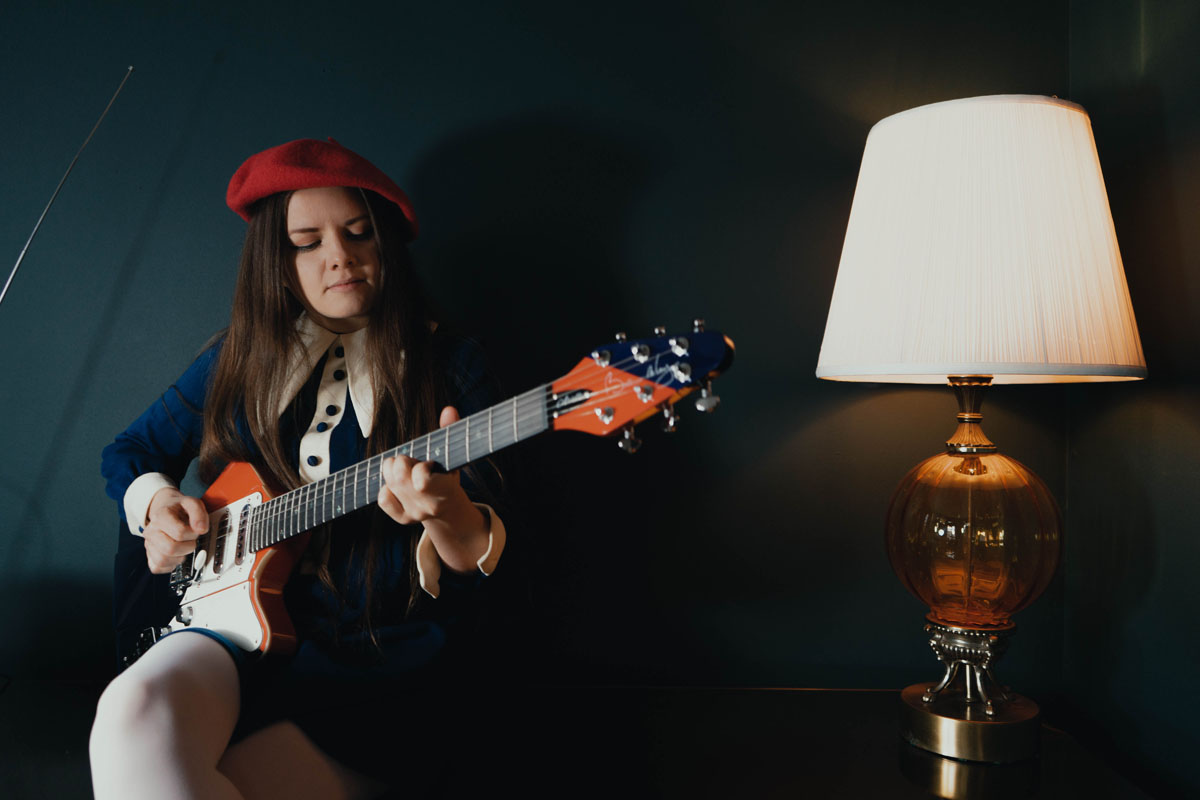
What’s your rig looking like at the moment – you’ve used Fender-style amps plus pedals like the Catalinbread Echorec, Fulltone OCD and J. Rockett Animal in the past…
“You named a lot of them! I’ve actually shrunk my pedalboard recently, so there’s only five on there now, which still sounds like a lot to me. I use two different chains, so they’re not all connected together.
“Unfortunately it has to be that way because I’m singing. I only have one shot to to hit a button and that needs to be my clean sound. I can’t look down and fiddle around, so I try to make sure my setup is very streamlined.
“Right now I’m doing the Eric Johnson thing, where I run three amps that do three separate things. I never understood it with him and would say, ‘Just get pedals, bro!’ and then learned quickly that it wasn’t the way to go.
“The more I’ve played, the more I’ve realised that the true tone should come from the guitar and the amp. Whatever you put in there has to be really great and a necessity, otherwise it’s just going to be excess noise and weird saturation that is unnecessary.”
So which amps have you got doing what?
“There’s a Blankenship, made by this builder out in LA. That handles my lead tone, so I hit a button and it switches to that with my J. Rockett Animal for just a little overdrive. I leave the amp at around five where it’s breaking up quite well and then give it that extra push to smoothen it out.
“Things can get a bit wild in terms of frequencies and low end with the 15-inch speaker. That also has a Flashback delay running. It feels a lot louder than the others for some reason.
What I look for out of an overdrive is similar to Eric Johnson, that bassy and smooth, almost violin-like, kind of drive
“Then I have a Two-Rock Traditional Clean, it’s a 100-Watt amp which I like because there’s a lot of headroom. I can get that pure clean when I need it, with the Echorec in line and the TC Electronic Chorus/Flanger, the vintage one from the 80s, and a compressor.
“The final amp is my Divided By 13 RSA 31, which I break up on its own and use for tweed Deluxe kind of sounds. It has more of the Pete Townshend or Mike Campbell broken-up sounds, with no pedals involved. Most of the tones are from the amps themselves, plus a few pedals to colour certain parts. That’s all I’ve got.”

What exactly do you look for out of an overdrive pedal?
“What I’ve found, especially with overdrives which are typically variations of each other, is that one might work well with one amp or using a particular pickup. It might not always sound great for everything though, and it might not suit the other pedals you have. That’s something Eric has talked a lot about.
“I’ve had help from Dave Philips from L.A. Sound, who has made pedalboards for everyone, and there’s an alchemy of all the pedals together, with the right guitar and amp. If you find something that works, don’t change it unless you switch amps or guitars.
“I used to play a Gibson 339 and I wouldn’t use the J. Rockett Animal for it, instead I’d use another of their pedals called The Dude – which I liked, as a Dudette myself [laughs]! It’s great with humbuckers. What I look for out of an overdrive is similar to Eric Johnson, that bassy and smooth, almost violin-like, kind of drive. I think Robben Ford has a similar kind of thing, which is probably another reason why I’m drawn to his playing.”
There’s definitely a warmth to those players that’s less mid-rangey than, say, other guitarists who use Tube Screamer-style circuits…
“Definitely, it’s the kind of overdrive that’s less used. The old J. Rockett Animal was built quite thick, and they made a smaller one, but I like the old one from 10 years ago. I think it sounds better. It does that sound really well without too much extra saturation.
“When you plug in, you can hear this sizzly thing… I learned a lot of that from Eric. One time he told me straight up, ‘I don’t like your tone,’ and I then asked him to help me. He ripped apart everything I had and suggested new things to try. That TC Flange I have is actually his, among a few other things. He was the one who got me to try different amps for each sound. He really helped develop my ear when it comes to tone.”
I’m being a full-blown hippie and trying to start something in the electric guitar industry that will help us become more conscious about what we’re doing
Well, he would know, some of the tones on Venus Isle are truly staggering…
“It’s such an amazing album. I don’t know why it’s so underrated! Ah Via Musicom got a lot of attention, and it’s great, but Venus Isle was the album that made me go, ‘Woah!’ It inspired my latest album too. A lot of the songs go into each other, and he is a master at doing that – like how the opening title track goes into Battles We Have Won with that synth part.
“The songs on that album flow into each other really well, which inspired me. It’s also very hard to do, because you’re in the studio doing it in real-time. You really have to think about it and it’s got to work, which is challenging. I’ve tried to replicate that but haven’t nailed it yet!”

And then you have an acoustic rig as well, which is usually a Martin D-28, a Neo Instruments Mini Vent II and the TC Electronic Flashback and Hall Of Fame…
“When Chris Cornell died, I threw Black Hole Sun into my set, which is what inspired getting that rotary [Mini Vent II] pedal. I’m always looking for the purest ones which don’t colour your tone too much… and it can be anything.
“That’s why I use the TC delay and reverb. Yeah, they’re cheap pedals and not boutique-y, but a lot of those ones colour your tone a lot – which I personally don’t want on acoustic. So I like the TC pedals, you don’t need to yell at the sound people asking where’s the reverb, and they work really well together. There’s nothing worse than a DI’d acoustic that’s dry!
“I have the preamp too on the acoustic, but to be honest, if you don’t have a good-sounding acoustic, it’s not going to help much. I’ve always looked for a great acoustic tone that complements my vocals. I had this acoustic that was custom-made for me and Eric told me he didn’t think it sounded good. I said to him, ‘But it’s pretty!’ and he just shook his head. He was trying to help and he was right!”
So what else do you have planned for this year?
“Well, I wanted to start doing some livestreaming. There will be variations of all sorts of things when the album comes out and they’ll all be recorded live professionally. The plan is to run through the entire album with my band, and then work on different setlists or maybe a different album or different locations. It doesn’t sound like a huge undertaking but I’m not used to create content of that calibre consistently.
“I’ll probably do those until summer which is when I’ll start working on another album… hopefully a double album, because why not?! This current one has been done for about a year and a half, so I’m bored already! The plan is to work on two albums and be touring Analog Girl In A Digital World this time next year with my next album ready to come out, which I’ll then start promoting.
“So you know, I plan to keep the cycle going and try to get some new guitar stuff too. I’m filming videos about the Brian May guitar, with also some other people trying them. Those things are taking most of my time. But there is one other thing I’ve been doing…”
And that is?
“Focussing on my trees! It occurred to me after doing some research on these tonewoods is that some of the trees, like ebony, take 60-80 years to mature. That’s a long time. I don’t know how many guitars we’ll sell but let’s just assume a lot. So that’s a lot of trees being cut down and there are plenty of guitars in the world.
“I’m trying to validate my signature, so I bought a bunch of tonewood seeds – I’ve got East Indian Rosewood, Koa, Mahogany, Ebony and Ash – and have started planting them.
I want to educate people about where their guitars come from. If you asked a bunch of guitar players what a mahogany tree looked like, they probably wouldn’t know
“It’s very difficult to do, because some of them become a bit of a science project. You put one in the fridge for two months to replicate the winter and then do more when you take it out. I’ve been growing them hydroponically inside, it’s the only way I can get it to work. I’ve planted eight so far and by the time the guitar comes out I will have 24, for the first 24 models sold.”

That’s a great idea – hopefully it will inspire more companies to do the same…
“I’m going to try and keep that up, and have different plots of lands all over the world that can cater to different woods. What grows in parts of the US is different to what you can grow in the UK, where it’s easier for colder trees like spruce, alder and birch, and then grow more of the exotic stuff across the pond.
“I want to educate people about where their guitars come from. If you asked a bunch of guitar players what a mahogany tree looked like, they probably wouldn’t know. There’s a level of disconnect that’s affecting the planet.
“Even though guitars and musical instruments only make up about one per cent of trees cut down, it’s a very specific one per cent. We want the best of the best, it has to be the best grain and perfect this. That has a big impact on the trees.
“I’m being a full-blown hippie and trying to start something in the electric guitar industry that will help us become more conscious about what we’re doing. Acoustics have come a long way, but electrics are a bit behind. I want to be at the forefront of that and help make up for the trees cut down for my Arielle guitars.”
- The BMG Arielle guitar is available from Brian May Guitars
- Arielle’s new album Analog Girl In A Digital World is released May 7. Order it here.
Amit has been writing for titles like Total Guitar, MusicRadar and Guitar World for over a decade and counts Richie Kotzen, Guthrie Govan and Jeff Beck among his primary influences. He's interviewed everyone from Ozzy Osbourne and Lemmy to Slash and Jimmy Page, and once even traded solos with a member of Slayer on a track released internationally. As a session guitarist, he's played alongside members of Judas Priest and Uriah Heep in London ensemble Metalworks, as well as handling lead guitars for legends like Glen Matlock (Sex Pistols, The Faces) and Stu Hamm (Steve Vai, Joe Satriani, G3).
“Every note counts and fits perfectly”: Kirk Hammett names his best Metallica solo – and no, it’s not One or Master Of Puppets
“I can write anything... Just tell me what you want. You want death metal in C? Okay, here it is. A little country and western? Reggae, blues, whatever”: Yngwie Malmsteen on classical epiphanies, modern art and why he embraces the cliff edge










